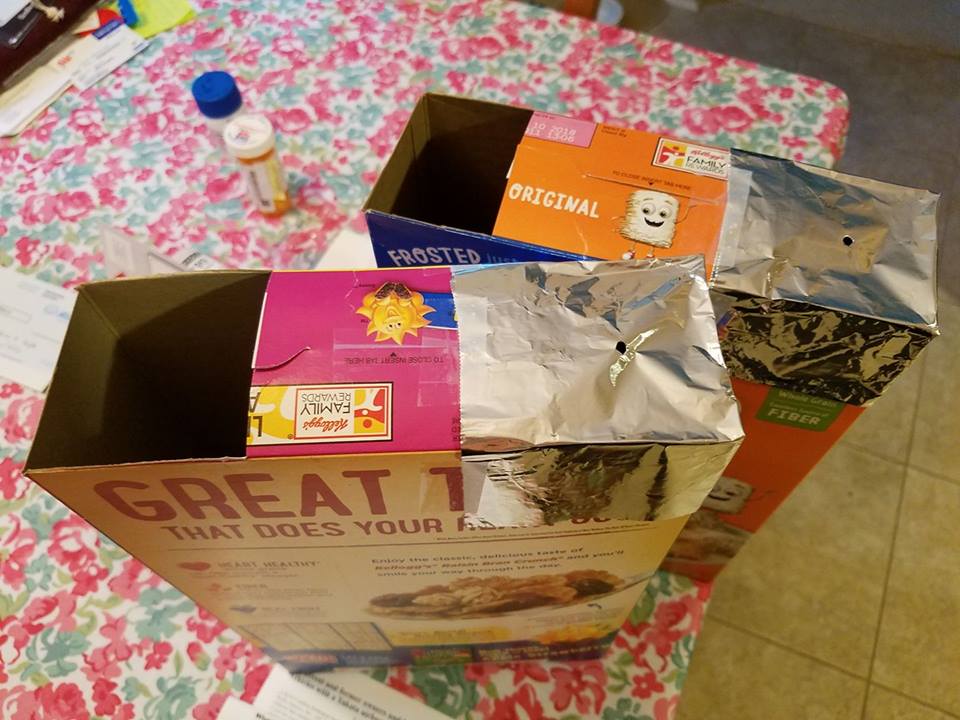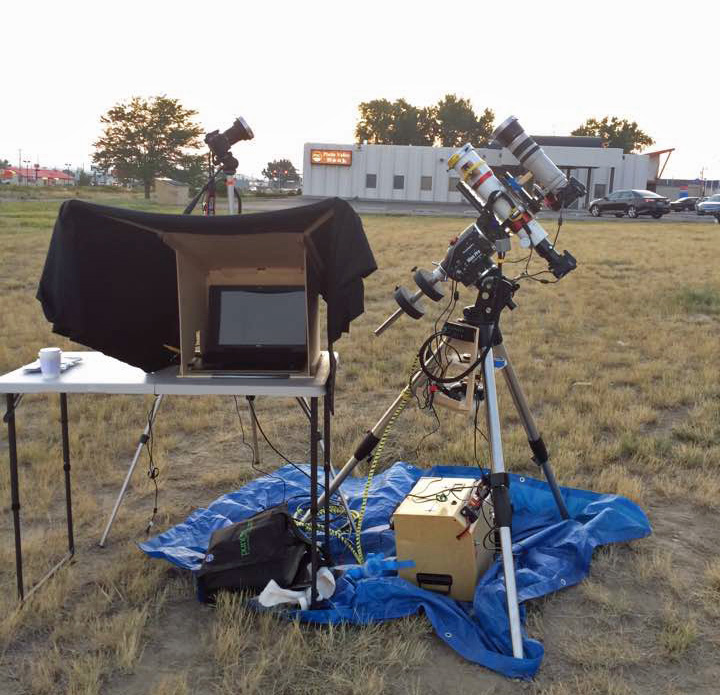Hopefully if you're viewing the eclipse today, you'll be using one of the safe methods that won't harm your eyes! ... But if you're somewhat of a trickster, here's an optical illusion you can send your friends after the eclipse, that might make them wonder (just for a second) if their eyes are working correctly!
Before we get to the illusion part, here's the gear some of my friends are planning to use to view it. My skate buddy Margie M. M. (not to be confused with Margie M!) is going with old-school pinhole projection boxes, whereas my SAS buddy John has set up a veritable solar observatory (he even drove out to Casper, Wyoming, to stack the odds in his favor, for having no clouds!)
I first saw the 12 dots illusion on twitter, and I thought it was pretty interesting. I'm sort of drawn to illusions & visual puzzles, and I think they're useful in showing how factors like layout & color can affect perception in visual analytics. I like trying to re-create optical illusions using SAS software, and I wrote a post last year demonstrating several of them. This "12 dots" illusion seemed like a good one to add to my growing collection ...
The layout was fairly simple - it's just a bunch of thick lines and dots. I picked a simple coordinate system, where the endpoints of the lines were 1 unit apart. I then worked out the x/y coordinates for the endpoints of all the lines, and stored them in a SAS dataset. I converted the dataset into annotate commands to draw the lines, and then used the annotate pie function to add the dots. And here's how it came out:
How many of the black dots can you see at the same time? This is tougher than you thought, eh? What are your feelings towards me now? (Remember, "hate" is a strong word!)










2 Comments
I agree - Impressive use of SAS!
Wow! I don't know if I'm more impressed with the process or with the thought to even attempt to do this in SAS. Either way... impressed.